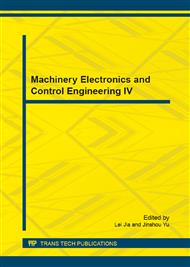[1]
C. D. Parker. Lead-acid battery energy storage systems for electricity supply networks, J. Power Sources, 2001, 100, 18-28.
DOI: 10.1016/s0378-7753(01)00880-1
Google Scholar
[2]
F. Díaz-González; A. Sumper; O. Gomis-Bellmunt and R. Villafá?la- ?Robles. A review of energy storage technologies for wind power applications, Renewable and Sustainable Energy Reviews, 2012, 16, 2154-2171.
DOI: 10.1016/j.rser.2012.01.029
Google Scholar
[3]
T. Brekken; A. Yokochi; A. Jouanne, Z. Yen; H. Hapke and D. Halamay. Optimal energy storage sizing and control for wind power power applications, IEEE Trans. Sustainable Energy, 2011, 2 69-77.
DOI: 10.1109/tste.2010.2066294
Google Scholar
[4]
A. Ingram. Storage options and sizing for utility scale integration of wind energy plants, in Proc. Int. Solar Energy Conf. 2005, Orlando, FL, Aug. 2005, pp.843-851.
DOI: 10.1115/isec2005-76181
Google Scholar
[5]
R. Saidur; M.R. Islam; N.A. Rahim; K.H. Solangi. A review on global wind energy policy, Renewable and Sustainable Energy Reviews 2010, 14, 1744-1762.
DOI: 10.1016/j.rser.2010.03.007
Google Scholar
[6]
Dennis Y.C. Leung; Yuan Yang. Wind energy development and its environment impact: A review, Renewable and Sustainable Energy Reviews, 2012, 16, 1031-1039.
DOI: 10.1016/j.rser.2011.09.024
Google Scholar
[7]
B. K. Sahu, M. Hiloidhari, D. C. Baruah. Global trend in wind power with special focus on the top five wind power producing countries. Renewable and Sustainable Energy Reviews, 2013, 19, 348-359.
DOI: 10.1016/j.rser.2012.11.027
Google Scholar
[8]
Lu, Xi, Michael B. McElroy, and Juha Kiviluoma. Global potential for wind-generated electricity, Proceedings of the National Academy of Sciences of the United States of America, 2009, 106, 10933-10938.
DOI: 10.1073/pnas.0904101106
Google Scholar
[9]
T. Burton, D. Sharpe, N. Jenkins, and E. Bossanyi. Wind Energy Handbook. New York: Wiley, (2001).
Google Scholar
[10]
G. M. J. Herbert, S. Iniyan, E. Sreevalsan, and S. Rajapandian. A review of wind energy technologies, Renewable Sustainable Energy Reviews, 2007, 11, 1117-1145.
DOI: 10.1016/j.rser.2005.08.004
Google Scholar
[11]
G. Cimuca, C. Saudemont, B. Robyns, and M. Radulescu, Control and performance evaluation of a flywheel energy-storage system associated to a variable-speed wind generator, IEEE Trans. Ind. Electron., vol. 53, no. 4, pp.1074-1085, Jun. (2006).
DOI: 10.1109/tie.2006.878326
Google Scholar
[12]
Bludszuweit, H.; Domínguez-Navarro, J.A. A probabilistic method for energy storage sizing based on wind power forecast uncertainty. IEEE Trans. Power Syst. 2011, 26, 1651-1658.
DOI: 10.1109/tpwrs.2010.2089541
Google Scholar
[13]
Li, J.; Wei, W.; Xiang, J. A simple sizing algorithm for stand-alone PV/wind/battery hybrid microgrids. Energies 2012, 5, 5307-5323.
DOI: 10.3390/en5125307
Google Scholar
[14]
G. Giebel, G. Kariniotakis, and R. Brownsword. (2003, Sep. 11). The state-of-the-art in short-term prediction of wind power. A literature overview, Deliverable Report D1. 1 of the Anemos Project (ENK5-CT-2002-00665) [Online]. Available: http: /anemos. cma. fr.
Google Scholar
[15]
M. Lei, L. Shiyan, J. Chuanwen, Liu Hongling and Z. Yan. A review on the forecasting of wind speed and generated power, Renewable and Sustainable Energy Reviews, 2009, 13, 915-920.
DOI: 10.1016/j.rser.2008.02.002
Google Scholar
[16]
S. Soman, H. Zareipour, O. Malik and P. Mandal. A review of wind power and wind speed forecasting methods with different time horizons, in 42nd North American Power Symposium (NAPS), Arlington, Texas, USA, September 26-28, 2010, Pages 1-8.
DOI: 10.1109/naps.2010.5619586
Google Scholar
[17]
A. Costa, A. Crespo, J. Navarro, G. Lizcano, H. Madsen and E. Feitosa. A review on the young history of the wind power short-term prediction, Renewable and Sustainable Energy Reviews, 2008, 12, 1725-1744.
DOI: 10.1016/j.rser.2007.01.015
Google Scholar


